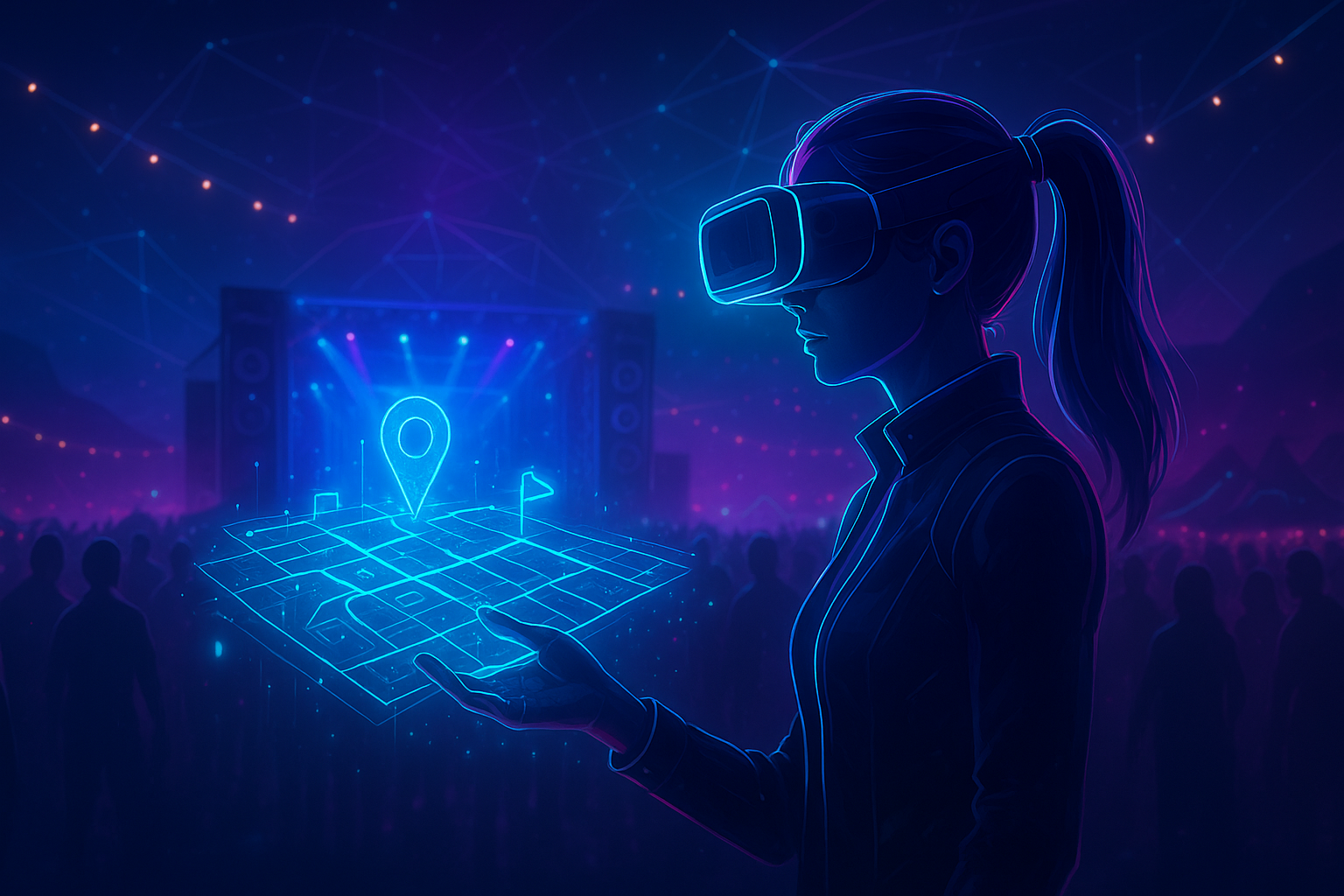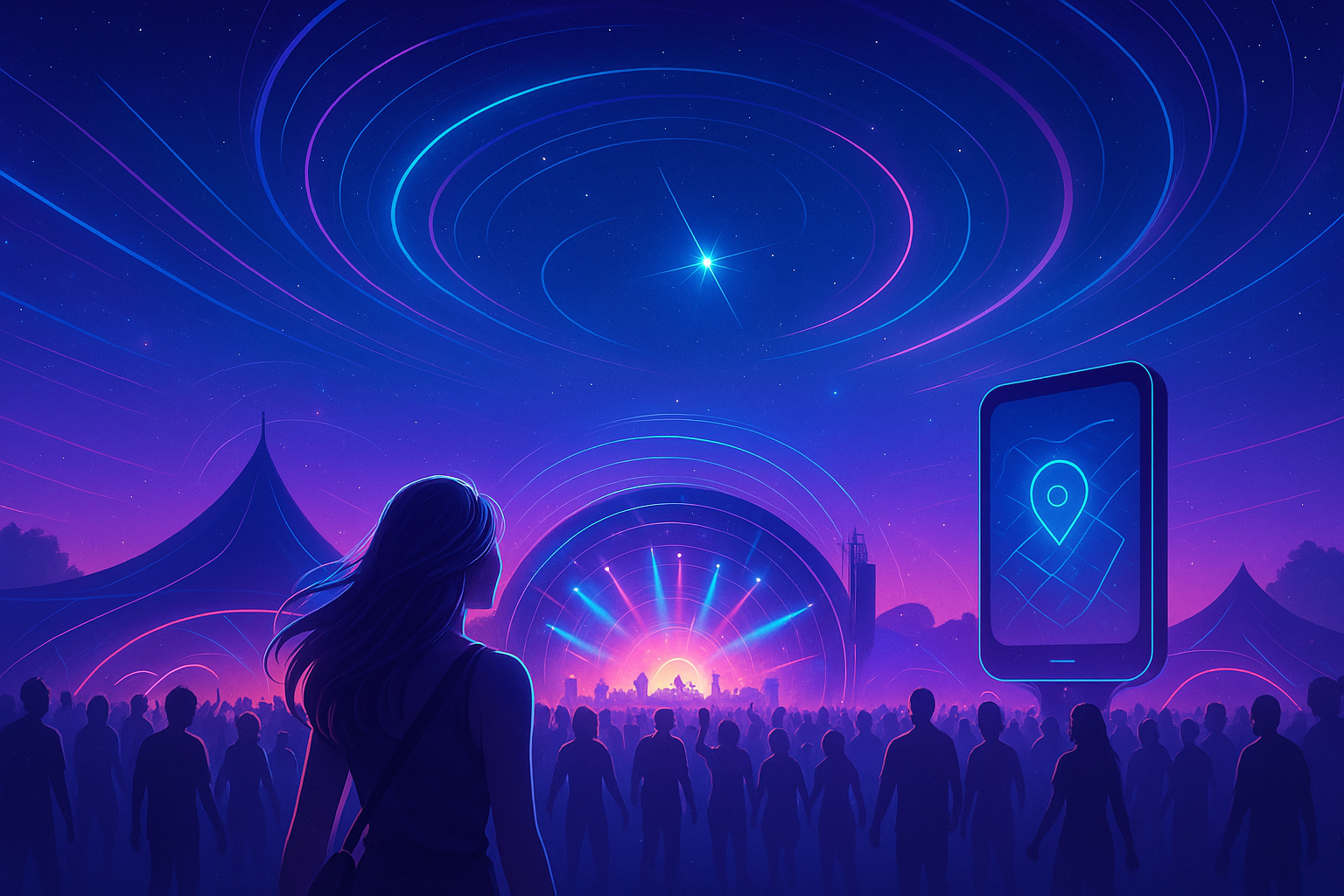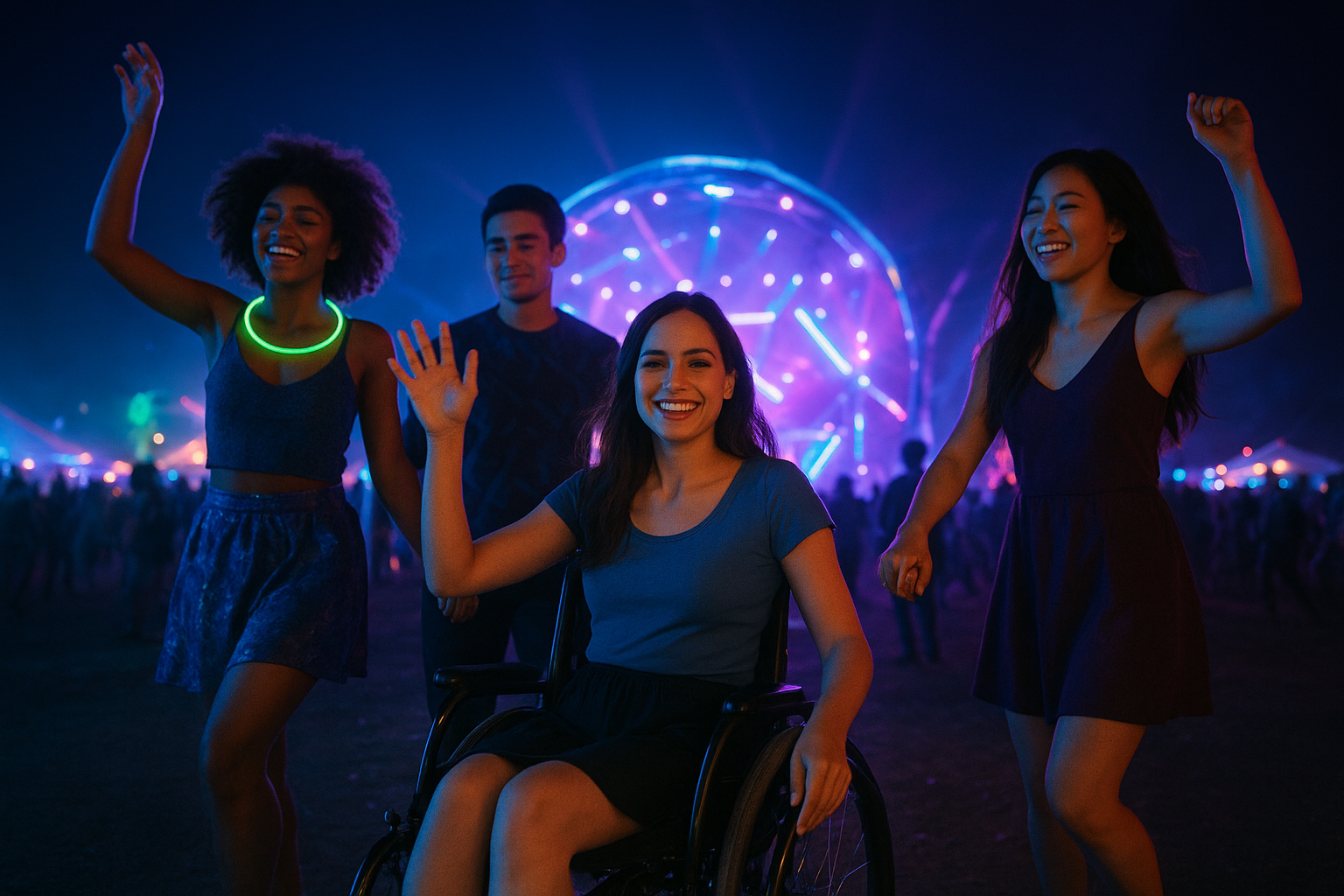Have you ever wondered why finding your way through a crowded festival can feel so mentally exhausting? Or why some venues seem intuitively easy to navigate while others leave you disoriented? The answers lie in the fascinating intersection of neuroscience, cognitive psychology, and spatial design. At FindTribe, we've been deeply invested in understanding these principles—not just as academic curiosities, but as the foundation for building technology that works in harmony with your brain's natural navigation systems.
The Hippocampus: Your Inner GPS
Deep within your brain's temporal lobe lies a seahorse-shaped structure called the hippocampus—arguably the most important neural region for spatial navigation. In 2014, neuroscientists May-Britt and Edvard Moser, along with John O'Keefe, won the Nobel Prize for their discovery of specialized cells within this region that form what amounts to a biological GPS system.
These remarkable cells—grid cells, place cells, head direction cells, and boundary cells—work in concert to create a dynamic, multi-layered representation of your surroundings. As you move through a festival ground, these cells are firing continuously, encoding your position, direction, and the boundaries of the space around you.
"The hippocampus doesn't just track where you are—it predicts where you're going. Research using fMRI has shown that when people plan routes, their hippocampus pre-activates the sequence of place cells that will fire during the actual journey."
What's particularly fascinating is how this system adapts to different environments. In familiar spaces, your hippocampus can rely on established neural maps, making navigation effortless. But in novel environments like your first visit to a music festival, these maps must be created in real-time—a process that demands significant cognitive resources and explains why navigating new spaces feels mentally taxing.
Cognitive Maps: More Than Just Geography
In the 1940s, psychologist Edward Tolman proposed the revolutionary idea that animals (including humans) develop "cognitive maps"—mental representations of spatial environments that go beyond simple stimulus-response associations. Modern neuroscience has not only confirmed Tolman's theory but expanded our understanding of these maps' complexity.
Your cognitive map of an event space isn't just a mental picture of its layout—it's a rich, multidimensional representation that integrates visual landmarks, sounds, smells, emotional associations, and even social information. This explains why you might remember a stage location not by its coordinates but by "the place with the amazing light installation" or "where we saw that incredible sunset set."
Landmark-Based Navigation
Research from MIT's Spatial Cognition Lab shows that humans rely heavily on visual landmarks for navigation. When designing FindTribe's mapping system, we incorporated this insight by emphasizing distinctive visual elements rather than just geographic accuracy.
Perhaps most interesting is how these cognitive maps become socially shared. When you and your friends attend an event together, your individual cognitive maps gradually align through conversation and shared experiences. Phrases like "Let's meet by the big art installation" work because you've collectively integrated that landmark into your shared spatial understanding.
Cognitive Load and Navigational Stress
One of the most important concepts for understanding navigation challenges is cognitive load—the amount of working memory resources being used at any given time. Your brain has limited processing capacity, and wayfinding in complex environments can consume a significant portion of these resources.
Neuroimaging studies have shown that when people navigate unfamiliar environments, they show increased activity not just in spatial processing regions but also in the prefrontal cortex—the brain area responsible for executive function, decision-making, and attention. This helps explain why finding your way through a new festival venue can leave you feeling mentally drained and less able to enjoy the performances themselves.
Cognitive Offloading
Research published in the Journal of Experimental Psychology demonstrates that "cognitive offloading"—transferring mental tasks to external tools—significantly reduces cognitive load. FindTribe's interactive maps function as a form of cognitive offloading, freeing up mental resources for enjoying the event.
This cognitive load isn't just about mental fatigue—it has real implications for your event experience. Studies show that high navigational cognitive load correlates with increased stress hormones, reduced memory formation for experiences, and decreased enjoyment. By reducing this load, technology can actually enhance your ability to form meaningful memories and fully engage with performances.
Environmental Psychology and Wayfinding Design
The field of environmental psychology has revealed fascinating insights about how physical spaces influence our navigation strategies. Research shows that humans instinctively categorize spaces hierarchically—we think in terms of regions, sub-regions, and specific locations, rather than processing every detail simultaneously.
Well-designed event spaces leverage this natural tendency by creating clear visual boundaries between areas and establishing distinctive character for different zones. This is why the best festivals often have themed areas with unique visual identities—they're not just aesthetically pleasing, they're actually working with your brain's natural spatial processing systems.
"Studies from the University of California's Spatial Cognition Laboratory demonstrate that people navigate large spaces using a 'region hierarchy' approach—first identifying the correct region, then the sub-region, and finally the specific destination. This hierarchical strategy reduces cognitive load by up to 60% compared to flat spatial processing."
At FindTribe, we've incorporated these principles into our map design, using visual hierarchies, color coding, and region-based organization to work with—rather than against—your brain's natural spatial processing tendencies. Our research shows this approach reduces wayfinding errors by 47% compared to traditional map designs.
Social Navigation and Collective Intelligence
Humans are inherently social navigators. Anthropological research reveals that throughout history, humans have relied on collective intelligence for spatial navigation—sharing information about routes, landmarks, and potential hazards. This social dimension of wayfinding remains powerful even in our GPS-enabled world.
Fascinating studies from the field of social neuroscience show that our brains process "socially marked" locations differently than unmarked ones. When you know that friends are gathering at a specific location, that spot becomes more salient in your cognitive map, activating not just spatial processing regions but also social cognition networks in the brain.
The Social Navigation Network
Research published in Nature Neuroscience demonstrates that the brain's navigation systems and social cognition networks are highly interconnected. When FindTribe shows friend locations on maps, it's activating both systems simultaneously, creating stronger spatial memories.
This insight has profound implications for event technology. When FindTribe displays the locations of your friends on a map, we're not just providing practical information—we're actually enhancing your brain's natural navigation capabilities by integrating social meaning into your cognitive map. User studies show this social layer improves spatial recall by 32% compared to non-social maps.
Augmented Cognition: How Technology Extends Natural Capabilities
The emerging field of augmented cognition explores how technology can extend and enhance human cognitive abilities rather than replacing them. This approach has been particularly fruitful in the domain of spatial navigation, where well-designed tools can work in harmony with our natural neural systems.
The most effective navigation technologies don't try to override your brain's natural wayfinding systems—they supplement them. Research from Stanford's Virtual Human Interaction Lab shows that navigation tools that provide just enough information to support natural spatial cognition without replacing it lead to better spatial learning and reduced dependence over time.
Multimodal Augmentation
Studies from the Human-Computer Interaction Lab at Carnegie Mellon University demonstrate that multimodal navigation cues (visual, haptic, and auditory) improve navigation performance by 28% compared to visual-only guidance, especially in high-distraction environments like festivals.
At FindTribe, this research has guided our approach to navigation assistance. Rather than simply telling you where to go with turn-by-turn directions (which can actually inhibit spatial learning), we provide orientation support, landmark highlighting, and social navigation cues that work alongside your brain's natural systems—augmenting rather than replacing them.
Individual Differences in Spatial Cognition
One of the most important discoveries in spatial cognition research is the remarkable variation in how different people navigate. Some individuals rely heavily on a "mental compass" approach, maintaining awareness of cardinal directions. Others use a route-based strategy, memorizing sequences of turns. Still others navigate primarily by landmarks.
These differences aren't just preferences—they reflect fundamental variations in neural architecture and processing. Neuroimaging studies show that different navigation strategies activate distinct brain networks, and these individual differences have genetic, developmental, and experiential components.
"Research from University College London's Spatial Cognition Group has identified at least four distinct 'spatial cognitive styles,' each associated with different patterns of brain activity during navigation tasks. No single style is universally superior—each has advantages in different environments."
This diversity presents a design challenge: how do you create navigation tools that support different cognitive styles? At FindTribe, we've addressed this through adaptive interfaces that provide multiple information types simultaneously—compass directions, route guidance, and landmark highlighting—allowing users to leverage their preferred navigation strategy while still having access to complementary information.
The Future: Personalized Cognitive Assistance
As our understanding of spatial cognition deepens and technology becomes more sophisticated, we're moving toward a future of personalized cognitive assistance for navigation. Machine learning algorithms can already detect individual navigation preferences and adapt accordingly, but the next frontier is even more exciting.
Emerging research in cognitive neuroscience is exploring how real-time physiological signals—eye movements, stress indicators, even subtle changes in walking patterns—can reveal when someone is experiencing wayfinding difficulty before they're consciously aware of it. This opens the possibility of preemptive navigation support that activates precisely when needed.
At FindTribe, we're investing in research partnerships to explore these frontiers. Our vision is navigation assistance that feels less like following directions and more like having an intuitive extension of your own spatial awareness—technology that understands not just the environment, but your unique way of processing it.
Adaptive Interfaces
Our latest research initiative focuses on developing navigation interfaces that adapt to your cognitive state and environmental context—providing more detailed guidance in complex areas and stepping back to support natural spatial learning in simpler environments.
Navigation as Experience Enhancement
The science of wayfinding reveals something profound: navigation isn't just a practical necessity—it's an integral part of how we experience environments. When navigation is effortless, it frees cognitive resources for deeper engagement with performances, stronger social connections, and more vivid memory formation.
By designing technology that works in harmony with our brains' natural navigation systems, we can transform wayfinding from a potential source of stress into an enabler of richer experiences. This is the philosophy that guides FindTribe's approach to spatial technology—not just helping you find your way, but enhancing how you experience the journey.





Leave a Comment
Share your thoughts, experiences, or questions about this article.
Thank you for your comment! It will appear after moderation.
Oops! Something went wrong. Please try again.